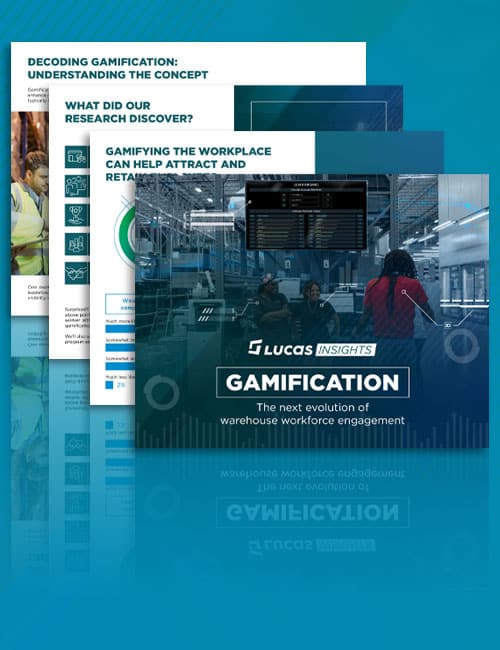
By Scott Mullins, EVP of Operations and COO, Lucas Systems
Self-distribution is an increasingly popular option for healthcare systems to consider when deciding how to manage their supply chain. The challenges brought about by the pandemic made many rethink strategy when it came to inventory, stock on hand, secondary options and the ability to guarantee supply and resiliency.
This approach has several advantages, including cost savings due to reduced reliance on third parties, improved control over inventory levels, better customer service and more efficient use of resources. However, there are also potential drawbacks that need to be considered before making the decision whether or not self-distribution is right for any particular healthcare system. In this article we will explore four factors that must be thoroughly evauated.
1. Cost and Efficiency – The most obvious factor to consider when deciding whether or not to pursue self-distribution is cost. Self-distribution can be more expensive than relying on third party distributors due to the need for additional staff, equipment, and technology investments. Therefore, it is important that healthcare systems carefully analyze the costs associated with self-distribution before making any decisions in order to determine if they are likely to realize enough savings from increased efficiency and control over their supply chain operations in order to offset these upfront expenses of things like real estate and new building options. According to a recent article in The Journal of Healthcare Contracting, the minimum spend to make self-distribution work is approximately $35 million in spend.
Self-distribution can result in improved inventory levels and shorter lead times, which can help to reduce costs over time and enable healthcare systems to better meet the demands of their customers especially with on-premise space continuing to be at a premium. However, if a healthcare system is not able to effectively manage its distribution operations then it may end up incurring more expenses than it would have otherwise. That’s why they need to bring a distribution process efficiency mindset that includes investments in technology and automation.
2. Technology – In order for a healthcare system to successfully implement a self-distribution approach, it will need access to a wide range of technologies including supply chain management software, automated tracking systems, and advanced analytics tools. These types of technologies allow for greater visibility across all stages of the distribution process as well as more efficient use of resources. However, these technologies come with their own costs and require a significant amount of training for staff members before they are able to operate them effectively. Lucas Systems customer Baptist Health, whose network includes 12 hospitals and more than 150 physician practices and outpatient facilities spanning four counties, adopted a self-distribution strategy in 2015. Their main reasoning was to contain supply chain costs, reduce the amount of space used for inventory at hospitals and ultimately help provide better care. Rather than invest in large-scale automation projects and robotics, which can require long lead times and significant investment, Baptist chose to implement the Lucas Warehouse Optimization Suite, which is powered through unique AI-based optimization software. After implementation, they saw a 3x increase in picking productivity, increases in picking accuracy to 99.95% and a 20-30% improvement in inventory accuracy by location.
3. Regulatory requirements – In addition to the financial considerations mentioned above, healthcare systems must also take into account any regulatory requirements that may be applicable when deciding whether or not self-distribution is right for them. Healthcare products have many specific requirements including traceability, medical device configuration and refrigeration which necessitate enhanced logistics proficiencies. Healthcare supply chains can also have precise shipping and storage requirements for medicines and other biologically at-risk supplies. That means planning, inventory, and order management must be very closely aligned and optimized. Distributors are also governed by the 2013 Drug Supply Chain Security Act (DSCSA), which outlines steps to achieve interoperable, electronic tracing of products at the package level to identify and trace certain prescription drugs as they are distributed in the United States. As an example of how critical accuracy is in the pharmaceutical industry, Lucas customer Direct Relief is required to track every single lot from every vendor they receive, and know precisely who it came from and exactly where it goes. Prior to utilizing Jennifer, Lucas’ voice-directed picking solution, they were validating their lot numbers on paper. After implementing Jennifer, they were able to validate picking the correct lot at the time of the pick, verifying it with a three digit code, which would not let them proceed unless accurately confirmed. Their picking accuracy actually increased to 100%.
4. Customer Service – Finally, healthcare systems must also consider the impact that self-distribution may have on their customer service. Self-distribution can lead to improved inventory levels and shorter lead times, which can result in better customer service for patients. A Lucas customer who took on self-distribution utilized a mobile application directing the sortation process at the shipping docks in a way that ensured totes and cartons for a given delivery destination within a hospital (floor and unit) were staged on the same cart. Material handlers at the hospitals no longer needed to break down and sort incoming materials by destination.
Workers receiving items at the hospitals were able to get it to the floors more quickly, reducing wait time for patients and reducing material management costs at the hospitals. The solution also provided real-time notification of stock-outs, helping to improve order accuracy and customer service.
In conclusion, there are several factors that need to be taken into account when determining whether or not self-distribution is right for a particular healthcare system. Cost savings through increased efficiency and control over supply chain operations must be weighed against any additional expenses associated with technology investments and regulatory compliance. Additionally, the impact that self-distribution may have on customer service should also be taken into consideration before making a decision. By carefully evaluating all of these factors, healthcare systems can make an informed decision about whether or not self-distribution is a viable alternative for them. Scott Mullins is the EVP of Operations and COO at Lucas Systems, where he leads several cross-functional teams including, engineering, operations and support, with a focus on R&D, continuous improvement, scalability and new product development.
 With more than 30 years in technology leadership across several supply chain and healthcare organizations in both start up and established environments, Scott has excelled in developing strategic plans for implementation and operation of client services, product development and commercialization, quality assurance and training. He has extensive technical and executive experience in software development, technical infrastructure, capacity planning, project and storage management, cloud architecture, master data management, agile methodologies, and business process improvement.
With more than 30 years in technology leadership across several supply chain and healthcare organizations in both start up and established environments, Scott has excelled in developing strategic plans for implementation and operation of client services, product development and commercialization, quality assurance and training. He has extensive technical and executive experience in software development, technical infrastructure, capacity planning, project and storage management, cloud architecture, master data management, agile methodologies, and business process improvement.
His track record of operational excellence includes serving as Chief Technology Officer at Annexus Health where he built the product and technology function for the healthcare technology start up, growing the team from 4 to 62 members. He also spearheaded the development of data-driven value-based care solutions for healthcare supply chain leader Pensiamo as Vice President of Technology and led with software development at group purchasing organization Intalere.





